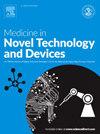Peripheral hemodynamic effects of synchronizing intermittent compression with cardiac pulsation
Q3 Medicine
引用次数: 0
Abstract
Intermittent pneumatic compression (IPC) is a noninvasive therapy choice for patients with peripheral arterial diseases, which typically inflates cuffs with a fixed compression period to facilitate peripheral perfusion. The fixed compression period ignores the synergistic effect between human cardiac pulsation and external intermittent compression, limiting the potential of IPC therapy. Meanwhile, existing IPC devices cannot directly assess peripheral perfusion in the target lower limb to provide feedback for adjusting treatment parameters and improving therapeutic efficacy. This work develops a cardiac cycle-synchronous IPC prototype, featuring an innovative flexible perfusion sensor module that enables real-time synchronization of compression with local blood perfusion distribution. By continuously monitoring peripheral perfusion distribution, the system adjusts compression timing based on real-time data, offering enhanced therapeutic efficacy compared to traditional fixed-period IPC treatments. We compare the therapeutic efficacy between an asynchronous mode and three cardiac cycle-synchronous modes. The results of on-body experiments show that the systole synchronous mode outperforms other modes, significantly improving the peripheral perfusion index (PPI) and augmentation index compared to the resting state. On the control side, the PPI had no significant difference between rest and treatment phase, which suggests that IPC treatment would not damage the peripheral blood perfusion on other body parts. The developed cardiac cycle-synchronous IPC prototype demonstrates that a good synchronization between the compression and the cardiac cycle might bring better therapeutic efficacy. The proposed prototype and the exploration of cardiac cycle-synchronous IPC therapy strategies are conducive to the development of non-invasive and intelligent therapies.
间歇压缩与心脏搏动同步的外周血流动力学影响
间歇气动压缩(IPC)是外周动脉疾病患者的一种无创治疗选择,通常是在固定的压缩时间内充气袖口以促进外周灌注。固定的压缩时间忽略了人心脏搏动与外部间歇压缩之间的协同作用,限制了IPC治疗的潜力。同时,现有IPC设备无法直接评估靶下肢外周灌注情况,为调整治疗参数、提高治疗效果提供反馈。这项工作开发了一个心脏周期同步IPC原型,具有创新的柔性灌注传感器模块,可以实时同步压缩与局部血液灌注分布。通过持续监测外周灌注分布,系统根据实时数据调整压缩时间,与传统的固定周期IPC治疗相比,提供了更高的治疗效果。我们比较了异步模式和三种心脏周期同步模式的治疗效果。体外实验结果表明,收缩同步模式优于其他模式,与静息状态相比,外周灌注指数(PPI)和增强指数显著提高。在对照组,休息期和治疗期PPI无显著差异,说明IPC治疗不会损害其他身体部位的外周血灌注。研制的心电周期同步IPC样机表明,良好的心电压迫与心电周期同步可能会带来更好的治疗效果。本研究提出的心脏周期同步IPC治疗策略的原型和探索有助于无创和智能治疗的发展。
本文章由计算机程序翻译,如有差异,请以英文原文为准。
求助全文
约1分钟内获得全文
求助全文
来源期刊

Medicine in Novel Technology and Devices
Medicine-Medicine (miscellaneous)
CiteScore
3.00
自引率
0.00%
发文量
74
审稿时长
64 days
 求助内容:
求助内容: 应助结果提醒方式:
应助结果提醒方式:


